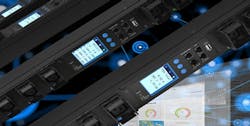Why High-Density Deployments Require Intelligent Power Management
There are a lot of changes happening within the modern data center. Cloud, big data, virtualization, and new types of workloads are revolutionizing the way administrators work with data center design. Consider this, a recent Data Center Knowledge article pointed out that the demand for data center capacity in the US grew tremendously over the last five years:
US data centers consumed about 70 billion kilowatt-hours of electricity in 2014, the most recent year examined, representing 2 percent of the country’s total energy consumption, according to the study. That’s equivalent to the amount consumed by about 6.4 million average American homes that year. This is a 4 percent increase in total data center energy consumption from 2010 to 2014, and a huge change from the preceding five years, during which total US data center energy consumption grew by 24 percent, and an even bigger change from the first half of last decade, when their energy consumption grew nearly 90 percent.
Efficiency improvements have played an enormous role in taming the growth rate of the data center industry’s energy consumption. Without these improvements, staying at the efficiency levels of 2010, data centers would have consumed close to 40 billion kWh more than they did in 2014 to do the same amount of work, according to the study, conducted by the US Department of Energy in collaboration with researchers from Stanford University, Northwestern University, and Carnegie Mellon University.
Today, rack power distribution units (PDUs) represent the last leg of the power chain. Therefore, it is critical that organizations choose rack PDUs with monitoring capabilities for high-density deployments. In fact, recent research2 shows that the rack PDU market is being driven by higher power ratings, desire for more intelligent products, demand for intelligent and security features, need for power provisioning, capacity planning and remote control. This paper discusses the electrical, physical and management considerations for effective cabinet-level power management within such high-density scenarios. It presents six key considerations when deploying intelligent PDUs into high-density cabinets and also covers the management of cost and security associated with the deployment of intelligent PDUs.
In this whitepaper from Chatsworth, we learn about the major considerations when it comes to intelligent power management when it comes to high-density deployments. Specifically, the paper examines:
- Appropriate input circuit – to handle required capacity
- Adequate outlet type and density – to plug all equipment
- Branch over-current protection type – to minimize nuisance tripping and downtime
- High ambient temperature rating – for reliable operation within hot aisles
- Appropriate functionality level – to monitor at the rack- or device-level
- Continual monitoring – to enable proactive notification of impending issues
Creating powerful data center efficiencies isn’t just about reducing cost. When we support high-density computing within the data center – we give the business greater capacities to create powerful competitive advantages. Download this whitepaper today to learn why intelligent power management at the cabinet level is critical to a successful high-density deployment, and why requires proper planning. The first step is to look at all the electrical input options available, and choose a compatible one that would also support the required cabinet density. The next step is selecting the appropriate type and number of outlets required to support the high-density environment. Proper care should be taken to ensure that the PDU selected will support the idiosyncrasies of high-density deployments such as higher rack temperatures and branch circuit currents
About the Author



